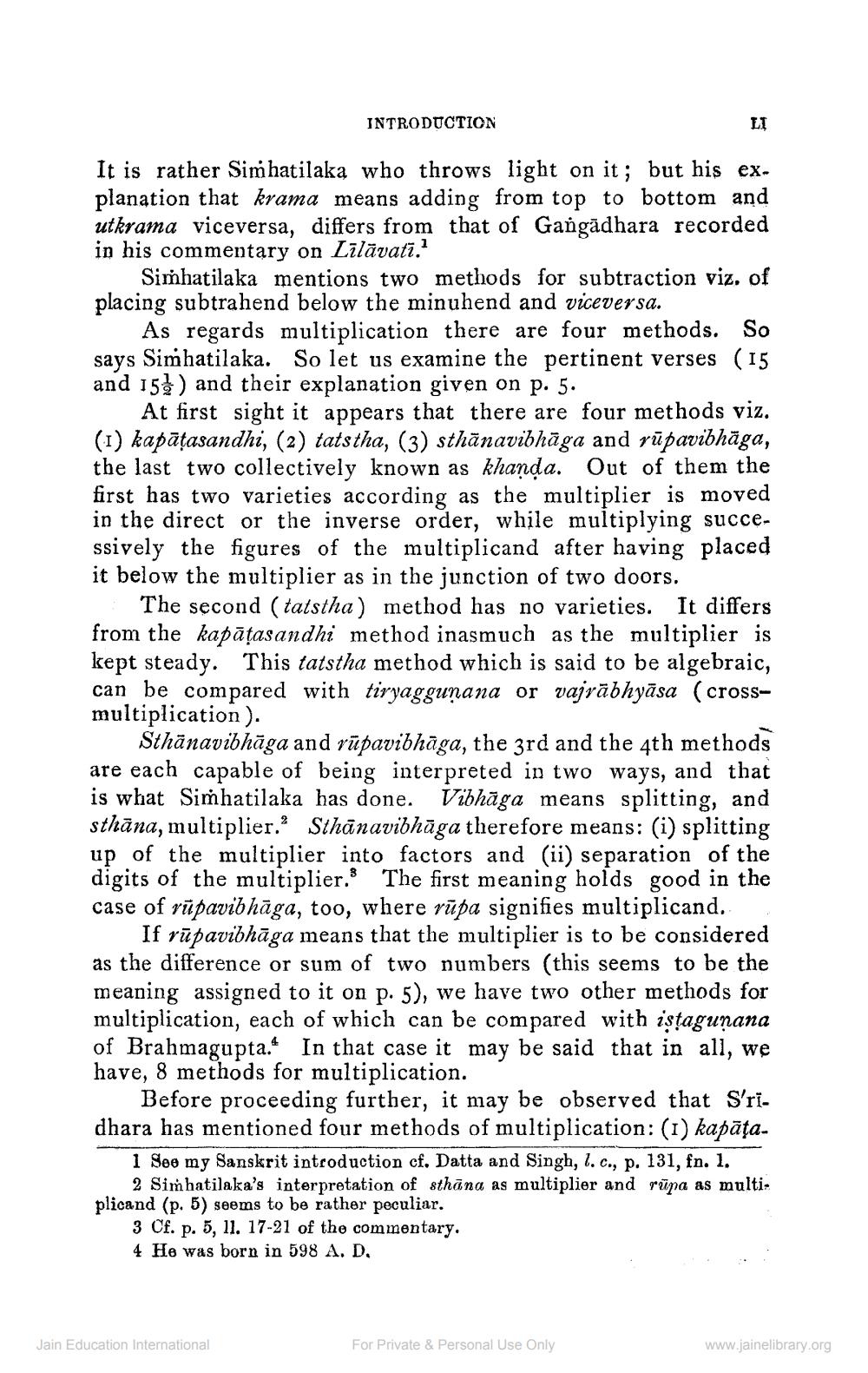________________
INTRODUCTION
It is rather Simhatilaka who throws light on it; but his explanation that krama means adding from top to bottom and utkrama viceversa, differs from that of Gangadhara recorded in his commentary on Lilavati.
LI
Simhatilaka mentions two methods for subtraction viz. of placing subtrahend below the minuhend and viceversa.
As regards multiplication there are four methods. So says Simhatilaka. So let us examine the pertinent verses (15 and 15) and their explanation given on p. 5.
At first sight it appears that there are four methods viz. (1) kapaṭasandhi, (2) tatstha, (3) sthānavibhāga and rūpavibhāga, the last two collectively known as khanda. Out of them the first has two varieties according as the multiplier is moved in the direct or the inverse order, while multiplying successively the figures of the multiplicand after having placed it below the multiplier as in the junction of two doors.
The second (tatstha) method has no varieties. It differs from the kapāṭasandhi method inasmuch as the multiplier is kept steady. This tatstha method which is said to be algebraic, can be compared with tiryagguṇana or vajrābhyāsa (crossmultiplication).
Sthānavibhāga and rūpavibhāga, the 3rd and the 4th methods are each capable of being interpreted in two ways, and that is what Simhatilaka has done. Vibhaga means splitting, and sthāna, multiplier. Sthanavibhāga therefore means: (i) splitting up of the multiplier into factors and (ii) separation of the digits of the multiplier. The first meaning holds good in the case of rūpavibhāga, too, where rupa signifies multiplicand.
If rūpavibhāga means that the multiplier is to be considered as the difference or sum of two numbers (this seems to be the meaning assigned to it on p. 5), we have two other methods for multiplication, each of which can be compared with iṣṭagunana of Brahmagupta. In that case it may be said that in all, we have, 8 methods for multiplication.
Before proceeding further, it may be observed that S'ridhara has mentioned four methods of multiplication: (1) kapāța
Jain Education International
1 See my Sanskrit introduction cf. Datta and Singh, l. c., p. 131, fn. 1. 2 Simhatilaka's interpretation of sthana as multiplier and rupa as multiplicand (p. 5) seems to be rather peculiar.
3 Cf. p. 5, 11. 17-21 of the commentary.
4 He was born in 598 A. D.
For Private & Personal Use Only
www.jainelibrary.org




